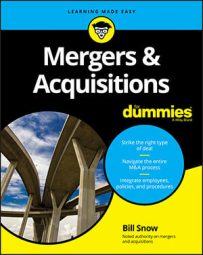After all the necessary agreements have been signed at an M&A closing, Buyer funds the deal by obtaining money from his sources and distributing that money to Seller and any other party that appears on the flow of funds statement.
A typical funding occurs as follows:
Money from Buyer and any other funding source (such as a bank) comes into a Buyer-controlled account.
Seller’s debt, including bank loans, notes payable, promissory notes, loans by shareholders, and so on, is paid off with Seller’s money.
Seller’s advisor fees, including legal, accounting, investment banking, and so on, are paid off. These expenses come out of Seller’s money.
Money is wired to the escrow account.
Money is wired to Seller’s account.
Buyer’s advisor fees are paid off. Buyer usually pays these expenses.
Although wire transfers are highly recommended for most deals, cashier checks may be a suitable alternative for smaller deals where the total proceeds are less than $1 million. Speak to your advisors about the recommended course of action for your specific deal.
Schedule your closing at an appropriate time of day so that you can complete the transfer. You can’t close a deal at 11 p.m. because you can’t wire money that late! Most closings begin in the morning with the goal of closing by 2 or 3 p.m. Eastern Time because that’s the nominal cut off time for banks. So even though wiring money after that time isn’t unheard of, plan on closing by 3 p.m. Eastern.

